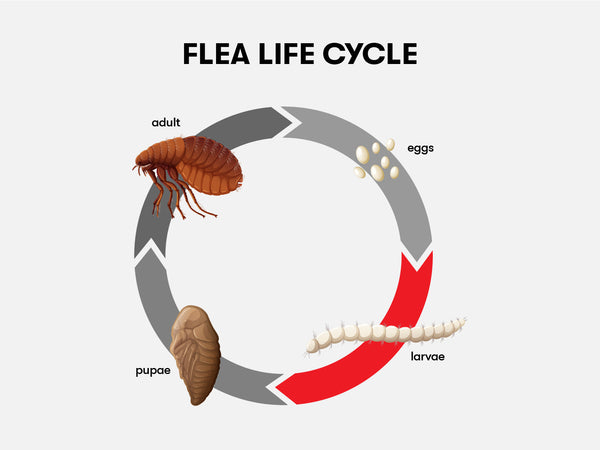Overview of the Immune System in Dogs & Cats
Written by: Dr. Jean Hofve, Holistic Veterinarian, DVM
What is the Immune System?
The immune system is a remarkable biological defense mechanism. In this article we'll introduce you to the basic components of your companion's immune system. This will help you begin to understand how your furry friend stays healthy and what may be happening within when they become ill in some way.
The first line of defense for any mammal is the skin, which acts not only as a barrier to keep out invaders, but also secretes antimicrobial substances to help deter or eradicate germs. The lining of the gastrointestinal system is essentially an internal extension of the skin. It creates a barrier to disease-causing organisms that enter through the mouth in food, liquid, or other ingested substances.
The skin and gut are populated with what are known as "healthy" bacteria that help prevent other possibly damaging organisms from taking up residence. Tears, mucus, and saliva contain antibacterial enzymes. Microbes that are not immediately eliminated may be caught up in mucus and swallowed, where they will be eliminated in a healthy gut. Germs or invaders that make it past these defense systems consequently deal with the immune system at a different level.
The major components of the "internal" immune system are:
- Lymph system
- Thymus
- Spleen
- Bone marrow
- White blood cells
- Antibodies
- Complement system
The Lymph System
The lymph system extends throughout the body in much the same way as blood vessels, but the lymph system is not pressurized and "pumped" like the circulatory system. Lymph fluid is a clear liquid that bathes the cells with water and nutrients and carries away waste products. It flows passively and gets pushed along to the lymph nodes by normal body and muscle movement.
Lymph nodes filter waste and contain large numbers of lymphocytes (see white blood cells below). When fighting infection, lymph nodes swell and can be felt if they are located near the surface of the body, such as in the throat area and behind the ears.
Lymphoma is a type of cancer in which some of the cells in the lymph system multiply uncontrollably.
Thymus gland, Spleen and Bone Marrow
The thymus gland is a small gland in the chest area that's responsible for producing T-lymphocytes or T-cells (see next section).
The spleen is the largest organ of the lymph system. It filters blood and eliminates bacteria and other foreign cells along with worn out red blood cells.
Bone marrow is the birthplace of new blood cells, both red and white. Red blood cells mature fully in the marrow and then enter the bloodstream. White blood cells may mature elsewhere in the lymph system. All blood cells are produced from stem cells, which are the precursors to many different types of cells. Stem cells are what mature into the specific types of white blood cells.
White Blood Cells
There are 16 or more types of white blood cells and five main ones tracked by your veterinarian. All white blood cells are involved in the immune system in some way. White blood cell levels increase when fighting disease in the body, which can be one way we use to determine the presence of disease using a blood test.
The primary cells of the immune system are lymphocytes and phagocytes. Lymphocytes are the most numerous cells of the immune system and are ultimately responsible for antibody production. Lymphocytes densely populate the body's lymph nodes, thymus gland, and spleen. The digestive system has a large amount of lymph tissue containing lymphocytes. Lymphocytes continually circulate throughout the body patrolling for invaders.
There are two major types of lymphocytes, B- and T-lymphocytes, more commonly known as B-cells and T-cells. B-cells can divide rapidly and produce antibodies that fight specific diseases. T-cells mature in the thymus, and they act more directly against invading or diseased cells, bumping up against and killing them. Killer T-cells can detect cells harboring viruses and destroy them. Helper T-cells "assist" killer T-cells by sensitizing them, and suppressor T-cells help control the immune response.
Phagocytes engulf and digest foreign cells or particles. They are found throughout the body in different forms. They migrate into tissues in response to infection and help clean up waste, bacteria and foreign debris.
Antibodies and Complements
Antibodies (also referred to as immunoglobulins and gamma-globulins) are complex protein molecules produced by B-cells. There are millions of different antibodies in the bloodstream. The abbreviations such as IgE, IgA or IgG in a medical document refer to specific types of antibodies. Blood tests for specific antibodies can indicate what disease an animal's system is fighting, or whether the immune system is reacting inappropriately, as in the case of allergies or autoimmune disorders.
Antibodies combine with specific antigens – typically foreign proteins on the surface of invading or diseased cells such as microorganisms or cancer cells. In the case of invading germs, the antibodies may cause the cells to clump together so they can be destroyed by phagocytes. If the foreign substance is a toxin, for instance, it is neutralized and carried along through the lymph system to be filtered out and eliminated. Antibodies are also involved in the allergic response, as described in other articles.
Complement Proteins
Complement proteins are a group of 14 proteins normally present in the blood. Complements are manufactured in the liver. The complement proteins are activated by and work with (complement) the antibodies, hence the name. They cause diseased cells to burst and signal to phagocytes that a destroyed cell needs to be removed.
Summary
This brief overview of the immune system can help you understand the complex mechanisms at work when your companion is ill. It can also help you understand the various ways in which the immune system can be enhanced or strengthened either to prevent disease or fight an illness


















